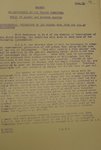Glider
Major
All
The previous thread was closed in unfortunate circumstances but I was just finishing the additional research that I promised to undertake. I feel that what I have goes some way towards addressing the outstanding questions and for completion is worth putting it on the forum.
For ease of reference, I will start by reposting the basic timeline that I posted at the start of the last thread which remains basically unchanged. This will be followed by the outstanding questions as posted in the last thread and then the new papers that I have found in the National Archives.
16th March 1939 Meeting
Held to consider the question when 100 Octane Fuel should be brought into use in the RAF and the number and type of squadrons involved.
There are three main parts to this.
i) It is true that at this meeting authorisation was given for 16 fighter squadrons and two twin engined bomber squadrons be converted to be use 100 Octane fuel by September 1940. The change over to start at the end of 1939 and the ACAS would select the squadrons.
ii) It was anticipated that these units would use 10,000 tons of fuel over a twelve month period and this would slow down the aim of achieving an 800,000 ton reserve.
iii) The AMPD asked that he should be kept informed as to the progress of the production of the 100 Octane fuel in order that the change over of squadrons could be kept under review in the light of any acceleration or diminution in Supplies.
General Points
A number of differences are apparent.
- Clearly this is a peace time plan, the war hadn't started, 18 squadrons would use a lot more than 10,000 tons over twelve months when at war. It is certain that when war started there would be changes.
- It covers both fighters and bombers
- They were not defined as being Blenheim just twin engined bombers of which the RAF had a number of types.
- The 18 squadrons wasn't a fixed number, it was open to change.
14th November 1939 letter
The tests of 100 Octane in the Hurricane and Merlin
In this letter it mentions:-
i) That the tests were successful
ii) The policy of immediately going over to the use of 12 lbs boost is being strongly urged by Fighter Command
iii) The decision is dependent on the availability of sufficient stocks of 100 Octane but that it is understood that there are adequate reserves for this eventuality
7th December 1939 Letter from FC Admin to HQ
This letter starts going into the nuts and bolts of how the change from 87 to 100 Octane would need to be handled. It's the sort of information any change of this magnitude will need.
The most interesting part is that it lists the 21 operational stations at which the fuel will be required in the first instance.
12th December 1939 Letter from Director Of Equipment re Issue of 100 Octane Fuel
Letter confirms that 100 Octane Fuel is approved for use in Spitfire, Hurricane and Defiant aircraft. Issue to be made as soon as the fuel is available at the distribution depots servicing the fighter stations concerned. Some bomber units may be given priority.
The date of use is dependent on when the fuel can be put down in bulk at the distribution sites and the relevant stations. Re the latter as a station empties a tank of 87 Octane it will be replaced with 100 Octane.
Observations
Clearly this is a change to the March notes. Certain aircraft are included and other aircraft in Fighter Command are excluded, no Blenheim fighter units are included or are any Gladiator units.
There is no limit set to the number of squadrons or area such as 11 Group, or any reference to specific squadrons. The RAF decided to use the 100 Octane and instead of limiting it to a number of squadrons, have decided to limit it by type of aircraft.
In my opinion, the statement of relevant stations can only mean those with Hurricanes, Spitfires or Defiants as defined as needing the fuel in the first instance.
18th May 1940 Summary of Conclusions of the meeting of the Oil Co ordination Committee
The key points here are:-
i) The Committee took note that the position of the use of this fuel in Hurricane and Spitfire aircraft had been made clear to Fighter Command.
ii) Satisfaction was expressed that the units concerned had been stocked with the 100 Octane Fuel
iii) The Minutes were to reflect the appreciation of the work of the Petroleum Board and that the Air Ministry had been impressed with the manner in which the work had been executed.
1st August 1940 Memo from Downing re the Handling of the Merlin Engine
This note is advising the pilots that there is an increase in engine failures in the overuse of the emergency 12lb boost.
The interesting thing is that this memo was sent to ALL fighter groups. Had we been talking about the 16 squadrons or less this would not have been the case. It would have been sent to the squadrons involved.
7th August 1940 Note confirming that the Use of 100 Octane had been authorised for all Commands.This speaks for itself.
Consumption Information
The following information are the consumption details of fuel during the BOB period. This information has come from the War Cabinet Oil Position Monthly report that is available from the National Archives.
Consumption of Aviation Spirit
The following figures are for the Air Minstry and are the Average Monthly Consumption
September – November 1939 16,000 tons
Dec 1939 – February 1940 14,000 tons
March 1940 – May 1940 23,000 tons
June 1940 – August 1940 10,000 tons (100 Oct) 26,000 tons (87 Oct)
Sept 1940 – November 1940 15,000 tons (100 Oct) 18,000 tons (87 Oct)
Point of Interest
The total Usage of fuel for June – August 1940 period and Sept – Nov 1940 period is essentially unchanged allowing for the reduction in daylight fighting and the reduction of the raids on the Barges by night. However there is a clear increase in the use of 100 Octane that can only come from the release of the fuel for other commands.
Reserves Information
The following information are the reserve stocks of 100 Octane fuel during the BOB period
This information has come from the War Cabinet Oil Position Monthly report (a) that is available from the National Archives, as well as Gavin Baileys paper(b) and Wood and Dempster(c).
Stocks of 100 Octane
30th September 1939 153,000 tons(b)
27th February 1940 220,000 tons(b)
31st May 1940 294,000 tons(a)
11th July 1940 343,000 tons(b)
31st August 1940 404,000 tons(a)
10th October 1940 424,000 tons(c)
30th November 1940 440,000 tons(a)
Point of interest. From the start of the war until the end of the BOB the reserves never dropped and continued to increase. There was never any danger of the supply of the oil running out.
In this summary I have not touched on the other papers, sources links that exist and support the view that Fighter Command was effectively fully converted to 100 Octane by May 1940. They were posted on the Me110 Hurricane Thread and we know they exist.
The previous thread was closed in unfortunate circumstances but I was just finishing the additional research that I promised to undertake. I feel that what I have goes some way towards addressing the outstanding questions and for completion is worth putting it on the forum.
For ease of reference, I will start by reposting the basic timeline that I posted at the start of the last thread which remains basically unchanged. This will be followed by the outstanding questions as posted in the last thread and then the new papers that I have found in the National Archives.
16th March 1939 Meeting
Held to consider the question when 100 Octane Fuel should be brought into use in the RAF and the number and type of squadrons involved.
There are three main parts to this.
i) It is true that at this meeting authorisation was given for 16 fighter squadrons and two twin engined bomber squadrons be converted to be use 100 Octane fuel by September 1940. The change over to start at the end of 1939 and the ACAS would select the squadrons.
ii) It was anticipated that these units would use 10,000 tons of fuel over a twelve month period and this would slow down the aim of achieving an 800,000 ton reserve.
iii) The AMPD asked that he should be kept informed as to the progress of the production of the 100 Octane fuel in order that the change over of squadrons could be kept under review in the light of any acceleration or diminution in Supplies.
General Points
A number of differences are apparent.
- Clearly this is a peace time plan, the war hadn't started, 18 squadrons would use a lot more than 10,000 tons over twelve months when at war. It is certain that when war started there would be changes.
- It covers both fighters and bombers
- They were not defined as being Blenheim just twin engined bombers of which the RAF had a number of types.
- The 18 squadrons wasn't a fixed number, it was open to change.
14th November 1939 letter
The tests of 100 Octane in the Hurricane and Merlin
In this letter it mentions:-
i) That the tests were successful
ii) The policy of immediately going over to the use of 12 lbs boost is being strongly urged by Fighter Command
iii) The decision is dependent on the availability of sufficient stocks of 100 Octane but that it is understood that there are adequate reserves for this eventuality
7th December 1939 Letter from FC Admin to HQ
This letter starts going into the nuts and bolts of how the change from 87 to 100 Octane would need to be handled. It's the sort of information any change of this magnitude will need.
The most interesting part is that it lists the 21 operational stations at which the fuel will be required in the first instance.
12th December 1939 Letter from Director Of Equipment re Issue of 100 Octane Fuel
Letter confirms that 100 Octane Fuel is approved for use in Spitfire, Hurricane and Defiant aircraft. Issue to be made as soon as the fuel is available at the distribution depots servicing the fighter stations concerned. Some bomber units may be given priority.
The date of use is dependent on when the fuel can be put down in bulk at the distribution sites and the relevant stations. Re the latter as a station empties a tank of 87 Octane it will be replaced with 100 Octane.
Observations
Clearly this is a change to the March notes. Certain aircraft are included and other aircraft in Fighter Command are excluded, no Blenheim fighter units are included or are any Gladiator units.
There is no limit set to the number of squadrons or area such as 11 Group, or any reference to specific squadrons. The RAF decided to use the 100 Octane and instead of limiting it to a number of squadrons, have decided to limit it by type of aircraft.
In my opinion, the statement of relevant stations can only mean those with Hurricanes, Spitfires or Defiants as defined as needing the fuel in the first instance.
18th May 1940 Summary of Conclusions of the meeting of the Oil Co ordination Committee
The key points here are:-
i) The Committee took note that the position of the use of this fuel in Hurricane and Spitfire aircraft had been made clear to Fighter Command.
ii) Satisfaction was expressed that the units concerned had been stocked with the 100 Octane Fuel
iii) The Minutes were to reflect the appreciation of the work of the Petroleum Board and that the Air Ministry had been impressed with the manner in which the work had been executed.
1st August 1940 Memo from Downing re the Handling of the Merlin Engine
This note is advising the pilots that there is an increase in engine failures in the overuse of the emergency 12lb boost.
The interesting thing is that this memo was sent to ALL fighter groups. Had we been talking about the 16 squadrons or less this would not have been the case. It would have been sent to the squadrons involved.
7th August 1940 Note confirming that the Use of 100 Octane had been authorised for all Commands.This speaks for itself.
Consumption Information
The following information are the consumption details of fuel during the BOB period. This information has come from the War Cabinet Oil Position Monthly report that is available from the National Archives.
Consumption of Aviation Spirit
The following figures are for the Air Minstry and are the Average Monthly Consumption
September – November 1939 16,000 tons
Dec 1939 – February 1940 14,000 tons
March 1940 – May 1940 23,000 tons
June 1940 – August 1940 10,000 tons (100 Oct) 26,000 tons (87 Oct)
Sept 1940 – November 1940 15,000 tons (100 Oct) 18,000 tons (87 Oct)
Point of Interest
The total Usage of fuel for June – August 1940 period and Sept – Nov 1940 period is essentially unchanged allowing for the reduction in daylight fighting and the reduction of the raids on the Barges by night. However there is a clear increase in the use of 100 Octane that can only come from the release of the fuel for other commands.
Reserves Information
The following information are the reserve stocks of 100 Octane fuel during the BOB period
This information has come from the War Cabinet Oil Position Monthly report (a) that is available from the National Archives, as well as Gavin Baileys paper(b) and Wood and Dempster(c).
Stocks of 100 Octane
30th September 1939 153,000 tons(b)
27th February 1940 220,000 tons(b)
31st May 1940 294,000 tons(a)
11th July 1940 343,000 tons(b)
31st August 1940 404,000 tons(a)
10th October 1940 424,000 tons(c)
30th November 1940 440,000 tons(a)
Point of interest. From the start of the war until the end of the BOB the reserves never dropped and continued to increase. There was never any danger of the supply of the oil running out.
In this summary I have not touched on the other papers, sources links that exist and support the view that Fighter Command was effectively fully converted to 100 Octane by May 1940. They were posted on the Me110 Hurricane Thread and we know they exist.

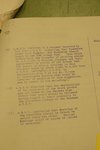
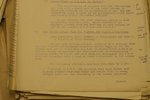
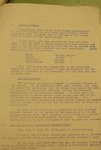
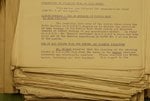
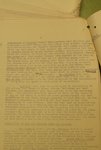
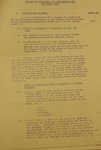
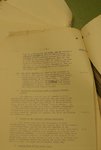
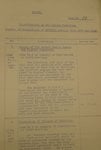
 Do you mind if I post and link to your post on other boards?
Do you mind if I post and link to your post on other boards?
